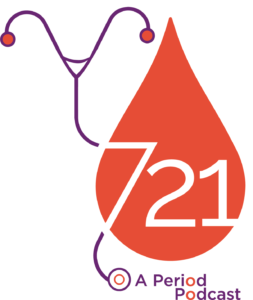You asked, we listened!
Upgraded, updated and designed for YOU by Blood Sisters
Download the tracking tools that you need. At your discretion, share your logs with your providers to aid conversations and improve your care.
Choose between two tacking methods: measuring volume loss or counting products (PBAC).
New Features
Guide includes instructions, tips, resources, definitions and references
Daily, Weekly, Monthly, and Annual Tracking Options
Measure by Volume
Menstrual Cup Option
Tracking Clotting and Flooding
Available in Spanish soon!
Please Read
Helpful Tips and Instructions
Tips for Best Digital Use
Download the pages you need. Save them on your computer or in a storage cloud, complete digitally, save, and share with providers.
Tips for Best Printing Results
To print the logs, open them in Adobe Acrobat Reader. Click the Print button, go to File, Print, or press Control + P on your keyboard. In the print dialogue, under Page Sizing; Handling, select Fit. This should ensure that your log does not get cut off when you print. If you are using another PDF viewer, look for an option that seems similar. Complete pages after printing and share with providers.
Customize Downloads
Measure by Volume
The HFA team created new tracking logs that measure volume based on the universal knowledge that 80ml (2.7oz) of blood loss during a menstrual cycle is determined to be ‘heavy menstrual bleeding.’ After much research, we determined it might prove more useful for patients and providers to track volume loss. Our goal is to provide a more comprehensive tool for those who have bleeding disorders and the potential to menstruate to track one’s menstrual cycle, general bleeding, and other signs and symptoms as it relates to their bleeding disorder.
Customize Downloads
Measure with Pictorial Blood Assessment Charts (PBAC)
The Pictorial Blood Assessment Chart (PBAC) is a tool that can be used to assess menstrual blood loss regardless of any underlying disorder.
Print Handouts
For Providers & Patients
Learn
Learning Central
Watch
Videos
Read
Articles and Infographics
- Advocacy for Hormone Therapy for Heavy Menstrual Bleeding, an HFA Resource
- Community Participation in Research Reveals Important Information about Pregnancy, Menstruation, and Hysterectomies (Dateline, Spring 2019, Pg. 10-11)
- La Menstruación es un Proceso Natural como Cualier Otro (Dateline, Fall 2019, Pg. 18-19)
- Do I have a Bleeding Disorder? (Dear Addy, December 2015)
- Let's Talk Period (multiple articles)
Listen
Podcasts and Interviews

7-2-1 Period Podcast
FWGBD is excited to announce our new PODCAST series, 7-2-1: All you need to know about periods, a conversation-style podcast that answers the most pressing questions about periods and heavy menstrual bleeding.

FLOW
FLOW is a monthly show for women with bleeding disorders, menstruating individuals who experience extreme bleeding, and those looking for more access to menstruation-health information.

CORE2ED: Period Podcast
A podcast series on Bleeding Disorders in Women and Girls, aiming to provide first-line healthcare professionals with insights on recognising, diagnosing, and managing bleeding disorders in women and girls.

Interviews with Dr. Paula James
Dr. Paula James is a graduate of the University of Saskatchewan (MD, 1996), Dr. James joined the Queen's University faculty as an Assistant Professor in the Department of Medicine in 2004. She was promoted to Associate Professor in 2008 and full Professor in 2015. She holds cross-appointments to the Department of Pathology and Molecular Medicine and Pediatrics at Queen's.
Cited Sources and Relevant Research
- Liberty, A., Samuelson Bannow, B., Matteson, K., Edelman, A., & Colwill, A. (2023). Menstrual Technology Innovations and the Implications for Heavy Menstrual Bleeding. Obstetrics & Gynecology, 141(4), 666–673. https://doi.org/10.1097/aog.0000000000005126
- Rezan Abdul-Kadir, Ahmad Tarawah, Naveen Shridhar, Roshni Kulkarni; Driving Change: Improving Diagnosis and Awareness of Heavy Menstrual Bleeding and Bleeding Disorders in Women and Girls Among Healthcare Providers. Blood 2022; 140 (Supplement 1): 2717–2718. doi: https://doi.org/10.1182/blood-2022-166777
- Cleveland Clinic, Heavy Menstrual Bleeding (Menorrhagia), accessed 5 June 2023, last medical professional review, 11/11/2021.
- James AH. Heavy menstrual bleeding: work-up and management. Hematology Am Soc Hematol Educ Program. 2016 Dec 2;2016(1):236-242. doi: 10.1182/asheducation-2016.1.236. PMID: 27913486; PMCID: PMC6142441.
- Quinn SD, Higham J. Outcome measures for heavy menstrual bleeding. Womens Health (Lond). 2016 Jan;12(1):21-6. doi: 10.2217/whe.15.85. Epub 2015 Dec 23. PMID: 26693585; PMCID: PMC5779559.
- Yahalom S., Gupta A., Dehdashtian S., Scheiner M., 94: Reliability of Counting Sanitary Pads In Evaluating Severity of Vaginal Bleeding. 2010 September.
Intira Sriprasert, Tarita Pakrashi, Thomas Kimble, and David F. Archer, Heavy menstrual bleeding diagnosis and medical management. Sriprasert et al. Contraception and Reproductive Medicine (2017), DOI 10.1186/s40834-017-0047-4.
CDC, Heavy Menstrual Bleeding, accessed 5 June 2023, last review, 8/17/2022. - DeLoughery E, Colwill AC, Edelman A, et al. Red blood cell capacity of modern menstrual products: considerations for assessing heavy menstrual bleeding. BMJ Sexual & Reproductive Health Published Online First: 07 August 2023. doi: 10.1136/bmjsrh-2023-201895







